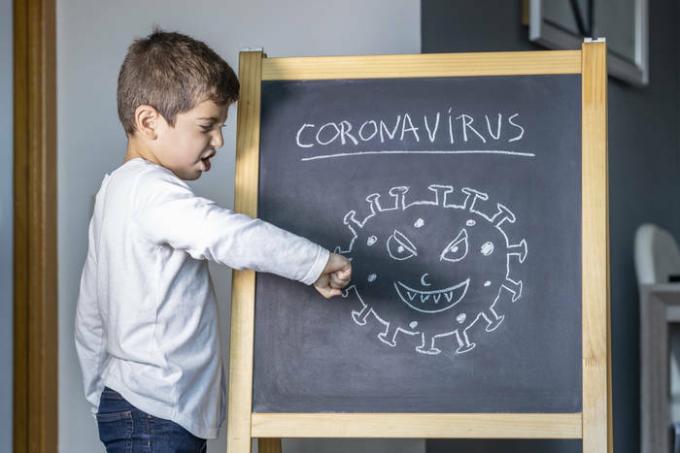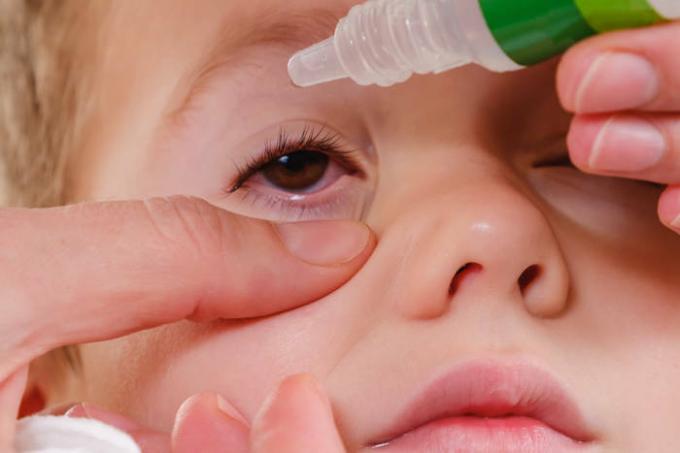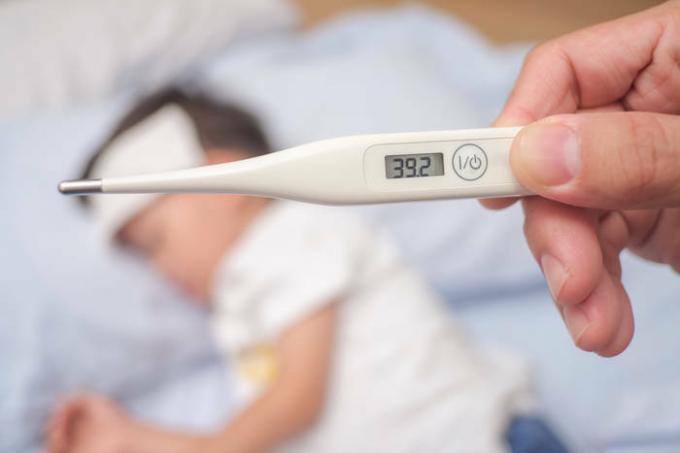Children began to get sick more often with coronavirus. How is their disease progressing now? How to treat it correctly? How to give a child first aid for respiratory failure? Read the doctor's answers in our article
«I checked how patients are treated in the city children's infectious diseases hospital... Doctors say that in the first wave of morbidity, mostly adolescents were admitted to hospitals. Now the majority of patients are preschool children. And with a more complex course of the disease and its consequences", - said Vitali Klitschko. Due to the large influx of cases in Kiev, the mayor is even considering the possibility to place patients in maternity hospitals.
Why has the coronavirus started attacking more children? What are the features of their COVID-19 treatment? These and other questions to our site were answered by
Ekaterina Shabelnik, pediatrician at the R + Medical Network.Are children really getting sick with COVID-19 more often?
Ekaterina Shabelnik says that there are more children with covid in her practice. And there are indeed more small children among them. “If before we worked with teenagers 13-17 years old, now I personally have the smallest 2-month-old patient,” she says.
The expert explains this with an increase in the incidence throughout the country. “It really is, it is not invented. And this is due, among other things, to the fact that people have become more careless about coronavirus infection. If earlier, when a person was diagnosed with covid-19, he followed the rules of self-isolation. Now many people wanted to sneeze at them. They visit public places, hide information that they are ill, ”the expert says.
This neglect extends to the closest family members - children. “Explain, do not explain that it is necessary to exclude kissing, to wear a mask at home, it does not help,” says Yekaterina Shabelnik. The fact that many babies are artificially fed also plays a role. “At the same time, they do not receive maternal immunoglobulin, therefore they become more susceptible to infections,” the expert explains.

As a rule, children easily defeat coronavirus / istockphoto.com
2. How is the coronavirus transmitted by children now?
Previously, most doctors said that children very often tolerate coronavirus. asymptomatic or very mild.
“Now there are more children diagnosed with covid-19, with obvious symptoms of a viral infection,” comments Ekaterina Shabelnik. It:
- high temperature;
- rhinitis;
- laryngitis;
- bronchitis.
There are also many children with intestinal manifestations of coronavirus - diarrhea and diarrhea. But coronavirus pneumonia in young children, according to the expert, practically does not occur. They are more teenage characters. Ekaterina Shabelnik explains this by the fact that older children lead a sedentary lifestyle, they sit a lot in gadgets. Because of this, the lungs are not so well ventilated, phlegm is poorly released and pneumonia occurs. “Therefore, if the child feels normal, do not force him to lie down. Let her move. It is good for the lung tissue, ”the expert advises.
As for the loss of smell and taste, the pediatrician does not recommend that parents focus on this symptom. “Children often do not pay attention to the fact that they do not feel the taste or smell,” explains Ekaterina Shabelnik. Therefore, if there are signs of a respiratory infection, whether there is this symptom or not, it is better to take a covid-19 test.
The expert also says that sometimes Kawasaki-like syndrome occurs among children with coronavirus.
It is characterized by:
- pronounced conjunctivitis (red eyes, they hurt, the child complains that he has sand in his eyes);
- severe headaches;
- painful rashes on the body;
- sore throat, like with angina, the child can refuse food and water because of it.
If you see such symptoms in a child, you need to see a doctor for help as soon as possible. “This syndrome affects the vessels of the circulatory system, which in the future can lead to cardiovascular failure. The sooner the child receives medical care, the lower the risk of such complications, ”explains Ekaterina Shabelnik.

Children with coronavirus can have severe conjunctivitis / istockphoto.com
3. How should COVID-19 in children be treated?
As a common respiratory disease, says Ekaterina Shabelnik. And this means drinking plenty of fluids (it is better if the pediatrician calculates the amount of fluid based on the child's age and body weight) and symptomatic prescription of medications. That is, the temperature has risen - we take an antipyretic. Sore throat - gives a special remedy. The expert also says that the effectiveness of taking vitamin D in the treatment of coronavirus disease has been proven. “Children need to be given a daily dose of 1000 units every day,” the pediatrician clarifies.
As for antibiotics, Ekaterina Shabelnik emphasizes that covid-19 is a viral disease, which means that it cannot be treated with antibiotics. They are prescribed only in the case of a bacterial complication. The doctor determines the feasibility of antibiotic therapy using the clinical picture and tests: blood test, C-reactive protein, procalcetonin. So, dear parents, you should not play it safe and give your child an antibiotic in the first days of illness. You can hurt him a lot.
Computed tomography should not be done either. “Remember that CT has a very high radiological burden. This is approximately how to take 30 X-rays at a time, the expert warns. - In addition, you need to lie still on the CT scan. This procedure is carried out for children in a very serious condition, who are in the hospital. If a child is being treated at home for coronavirus, he has good oxygen saturation, there is no point in sending him for a CT scan. If the doctor sees that the oxygen saturation has decreased, hears wheezing, he will prescribe an x-ray. If necessary, in two projections. "
4. How to understand that a child with COVID-19 needs to be urgently taken to the hospital?
Now every family should have a pulse oximeter - a device that shows the oxygen content in the blood. Normally, in children, the device should show 97-100%. “In order to have the correct indicators, the child must have warm hands. If they are cold, rub them well before measuring, - advises Ekaterina Shabelnik. - Also measure the saturation on different fingers. Also, keep in mind that some pulse oximeters are not designed to measure oxygen saturation in children. This should be written in the instructions. "
It is possible to understand without a pulse oximeter that there is a problem with the child's respiratory system - by rapid breathing. This is the most obvious symptom of pneumonia. It is necessary to count the breath when the child is asleep or in a calm state. The counting unit is inhalation-exhalation.
Breathing rates for children in one minute:
- From birth to two months - 60 units;
- From 2 to 12 months - 50 or less;
- From one to 5 years - 40 and less;
- From 5 to 12 years old - 30 units or less.
An ambulance, according to Ekaterina Shabelnik, should be contacted if:
- saturation below 92%;
- the child's respiratory rate is above 60 units;
- his lips, circumlabial triangle, nails turned blue;
- temperature under forty, which does not go well;
- confused mind
- strong pain;
- indomitable vomiting;
- green frothy fetid feces with bloody discharge.

A high temperature that does not go well, a reason to call an ambulance / istockphoto.com
5. How to help a child at home if his oxygen saturation has dropped or is choking?
As we already wrote above, with coronavirus disease, children often have laryngitis. In fairness, it should be noted that they also occur with other viral diseases.
Laryngitis is characterized by a nocturnal attack when the child breathe heavily. And you need to know how to give him first aid. “Its rules were developed by the American Association of Pediatrics,” says Yekaterina Shabelnik. The expert told what to do in this case.
- If the child is lying, you need to sit him so that the body takes an upright position.
- Open the window, give a stream of fresh air. If it's hot outside, turn on the air conditioner or open the refrigerator and bring the child to him so that he breathes cold air. You can give him cool water to drink or ice cream.
- In the absence of positive dynamics in the general condition of the child and the increase in manifestations of respiratory failure, drugs should be used. If you have a nebulizer at home, you need to inhale with a drug that will relieve swelling of the vocal cords. For example, Pulmicort. If it is not, then - "Prednisolone" in the form of a rectal suppository. We remind you that you do not need to self-medicate, contact your pediatrician.
You will also be interested to read:
Breastfeeding and COVID-19: Mom's Tips from Unicef
TOP 10 products that will help you transfer covid and post covid easier


